Let’s talk about dust - Christian Doffing

This time I want to write about something that nobody likes to deal with: dust, fog and balsam separation. We inevitably find all of this everywhere and especially where it doesn't has to be. For example in our lenses.
During the production of a lens, the air of the room it is assembled in, is enclosed like in a time capsule and with that everything that was in this air at the time. Dust, for example. With the further development of production and quality requirements, the expectations on a clean glass also increase. This makes the photographer happy and ensures a “clean” picture. For real?
During a talk to Jo Geier about the topic he said that he had a Noctilux in its original sealed packaging which was never been opened let alone used. That would be interesting to see what it looks like with a new premium lens. The view through the glass was a little surprising.
On the photo you can see a Noctilux 0.95 from current production, one of the flagships of Leica's lens production. It was unboxed for the first time and has never been mounted on a camera before. In the backlight of an LED, you can see a number of small dust inclusions.
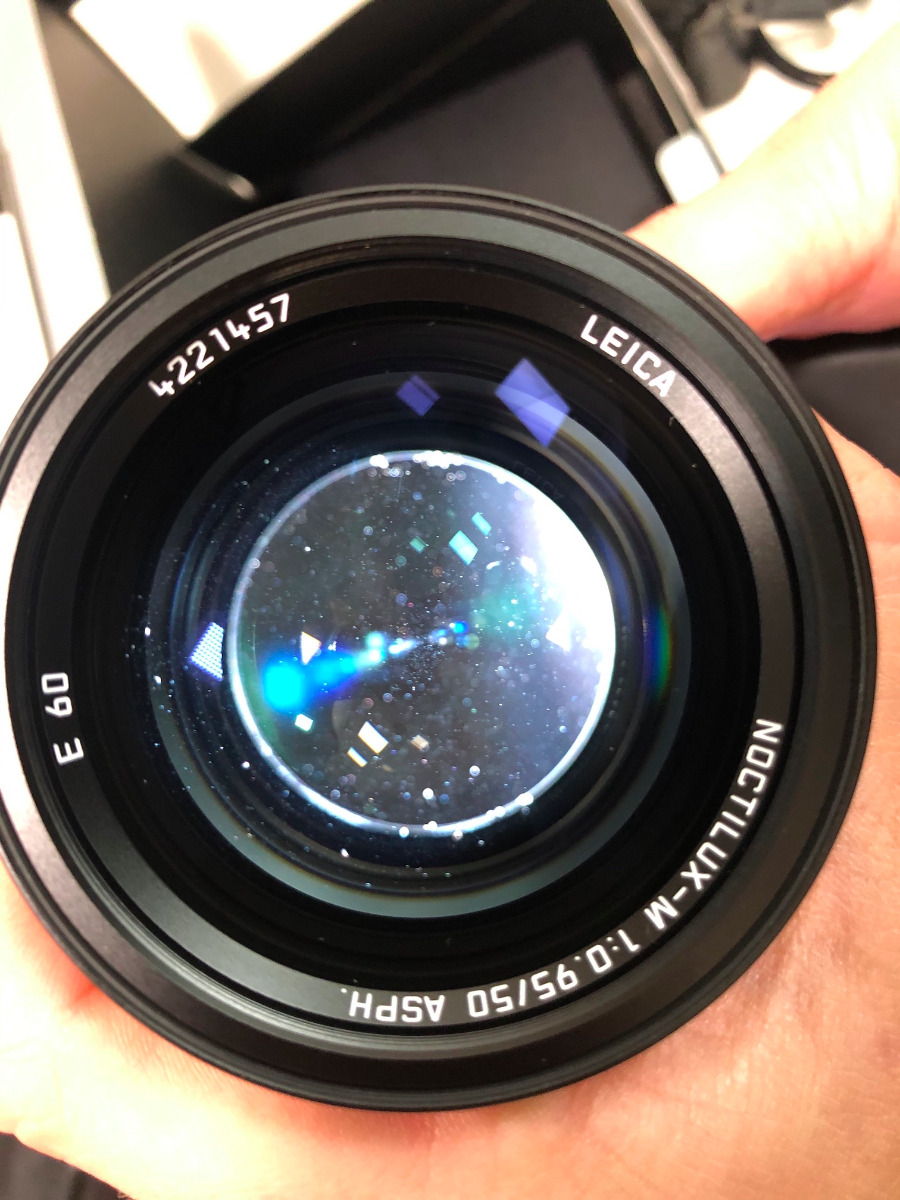
Next, let us take a look at a Leica M Summilux 1.4/50mm from 1970.
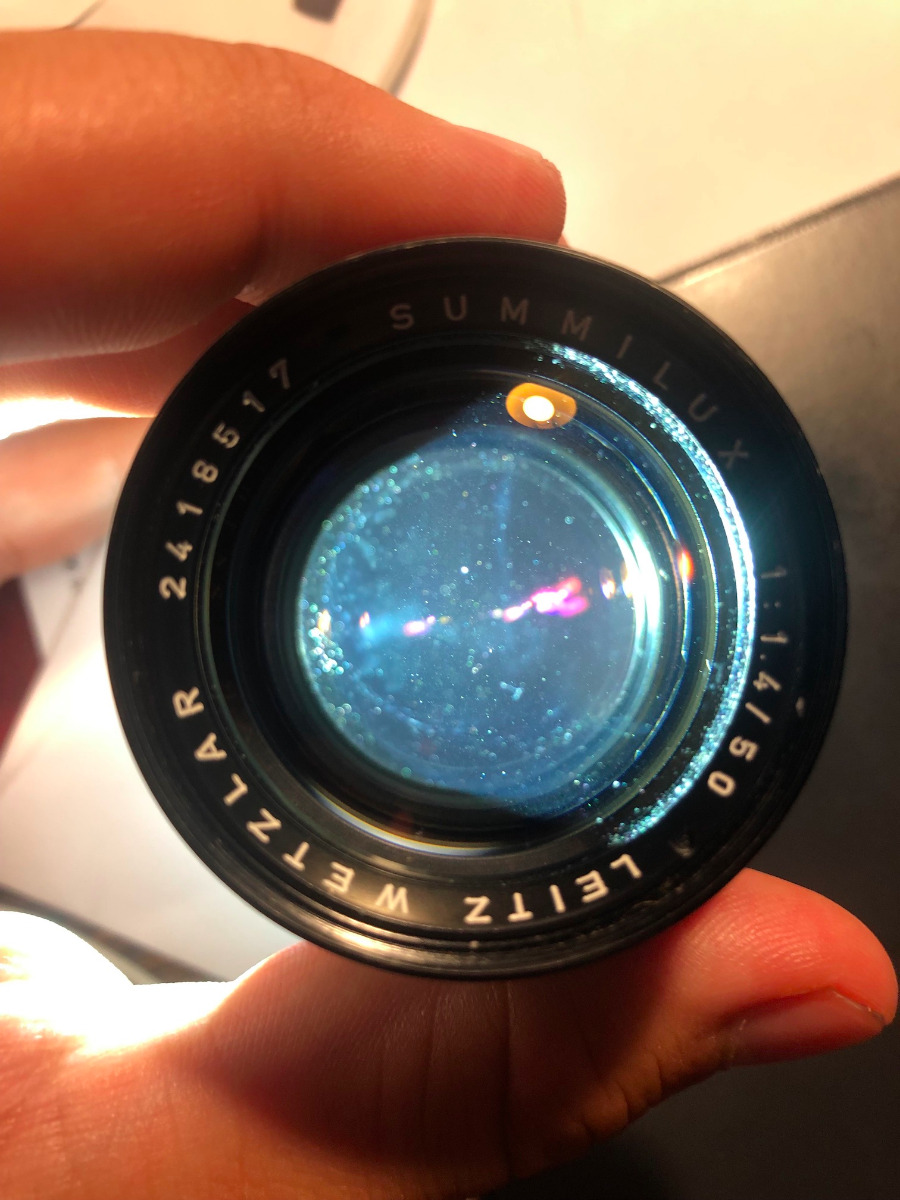
Here visible too, as expected, some dust inclusions and generally a little more haze.
My point is that every lens, no matter when and by which company it was built, has small inclusions due to the production process. But more importantly, none of this matters at all! As one or the other might already have guessed, all these small inclusions have no influence on the quality of the image, especially not when you shoot with such a wide open aperture. To blame a €11,000,- lens with a dust problem would be crazy. We are the ones to blame, we, who perceive every piece of dust as a flaw. In order to put the extent of the "pollution" from above in relation, here are two extreme examples and their effects: In the following you can see a completely scratched front lens of a Summicron and a Summitar with a balsam separation in between the front lens elements. First you can see the lenses themselves and then their sample images out of my camera.
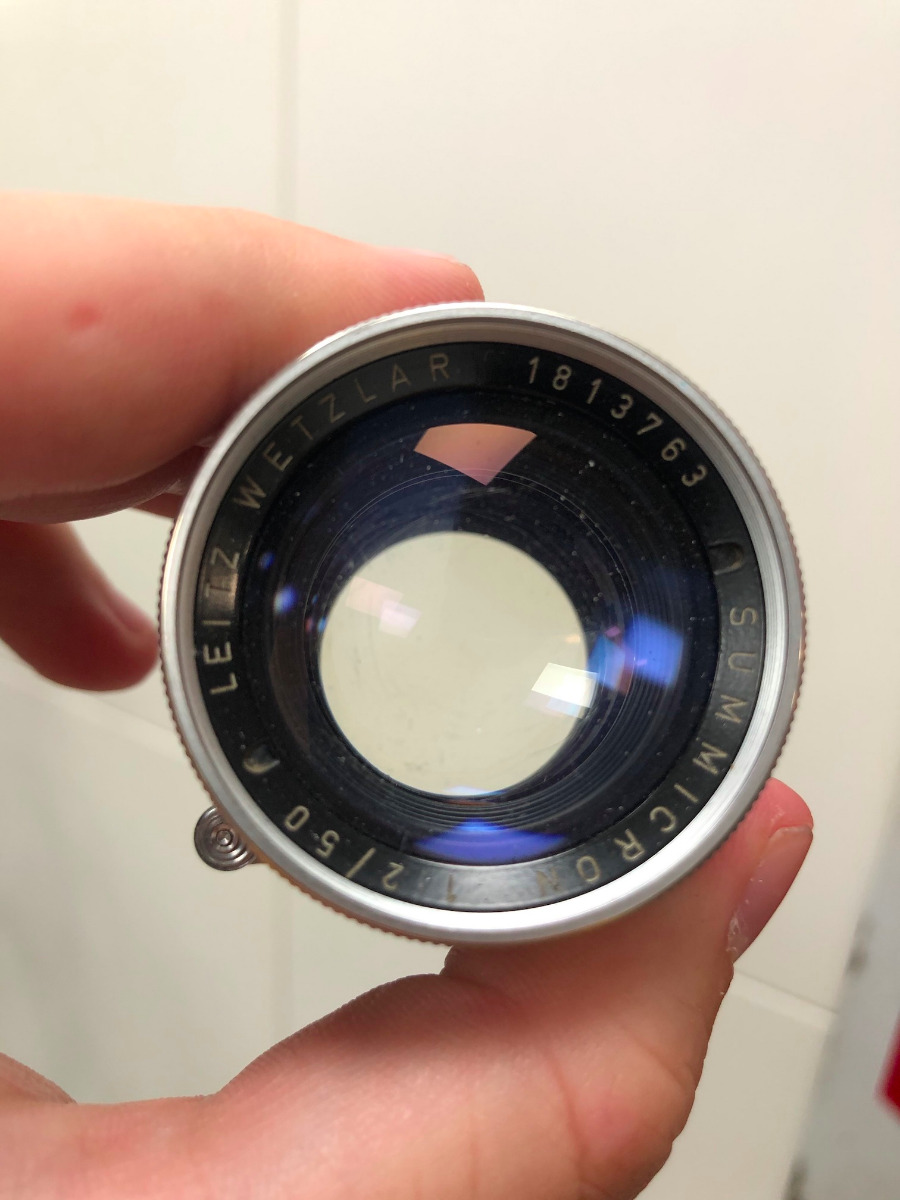
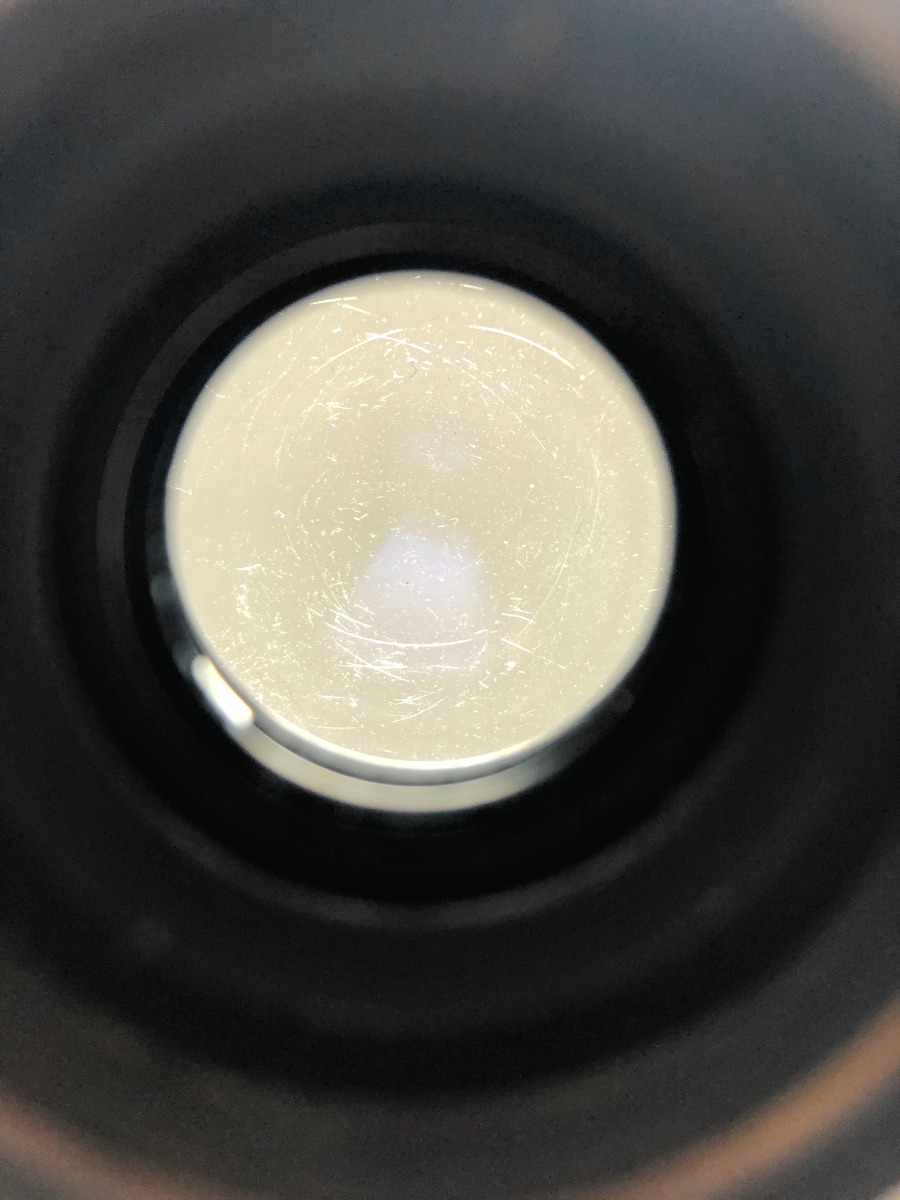
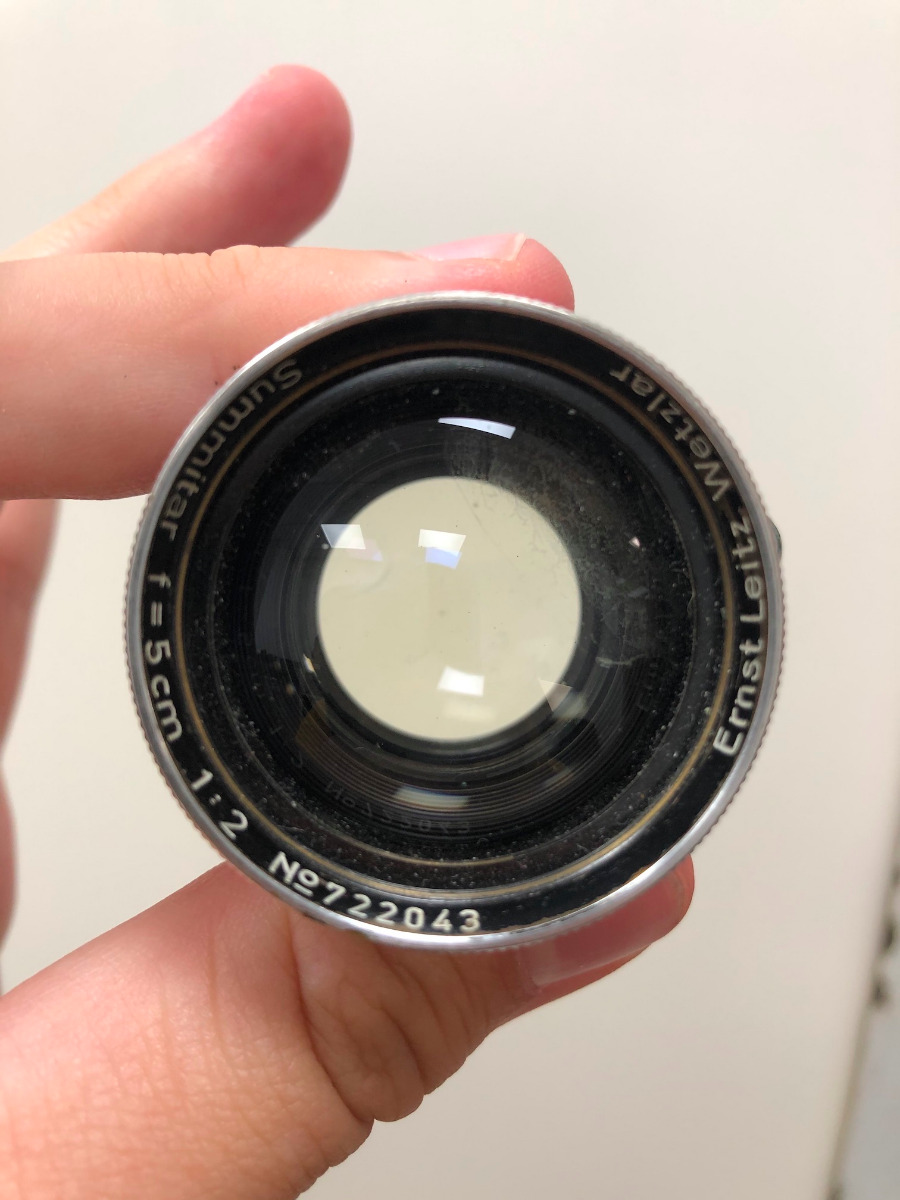
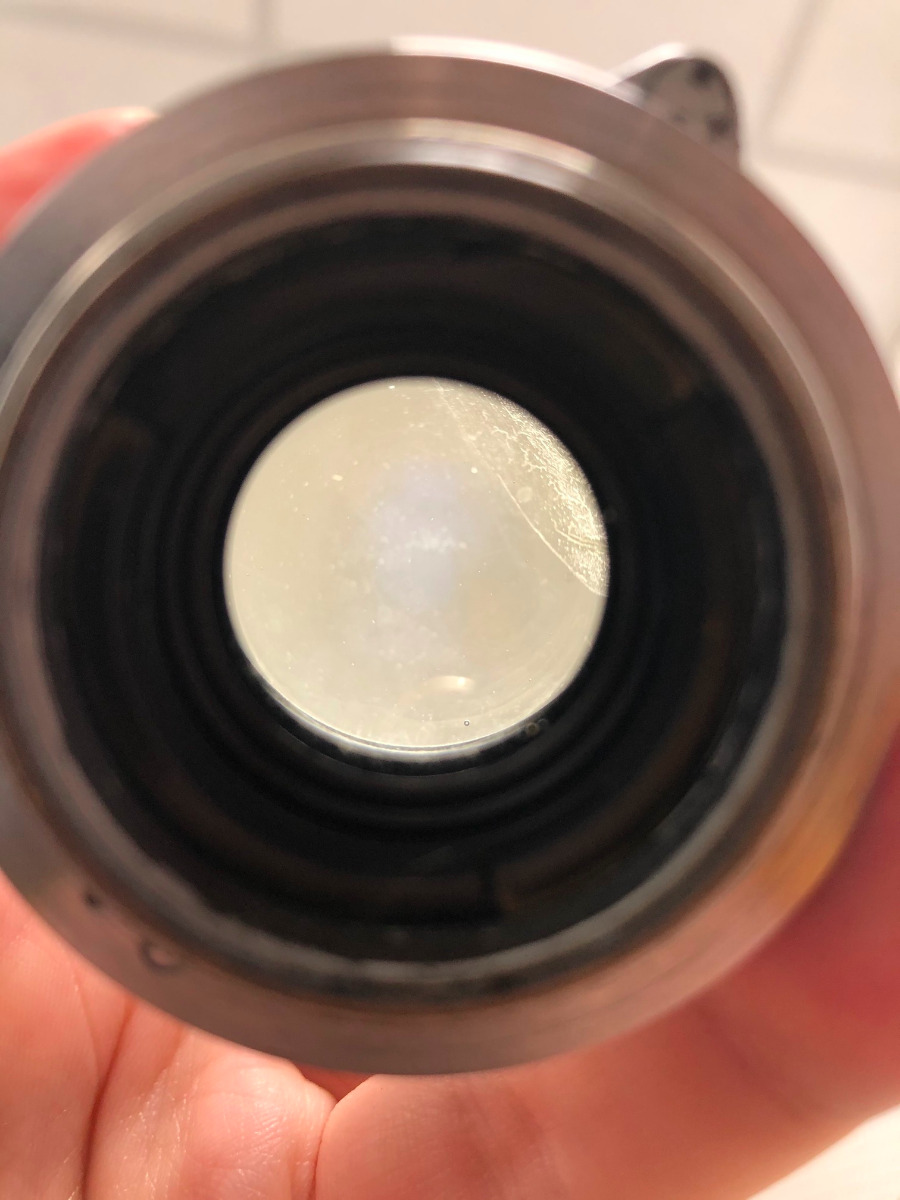

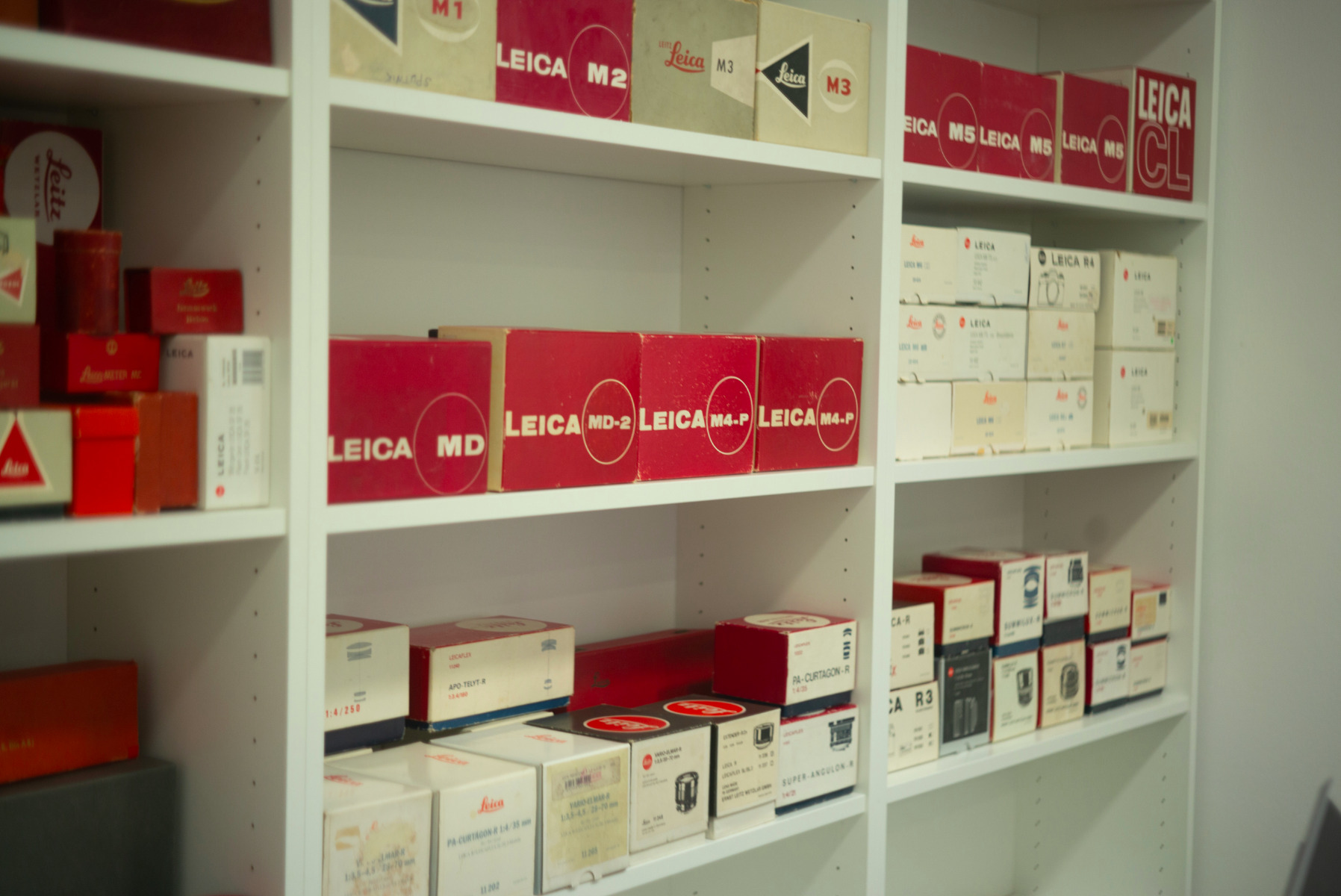
Sample images with a Leica M Summicron 2/50mm
with a completely scratched front lens at f/2.
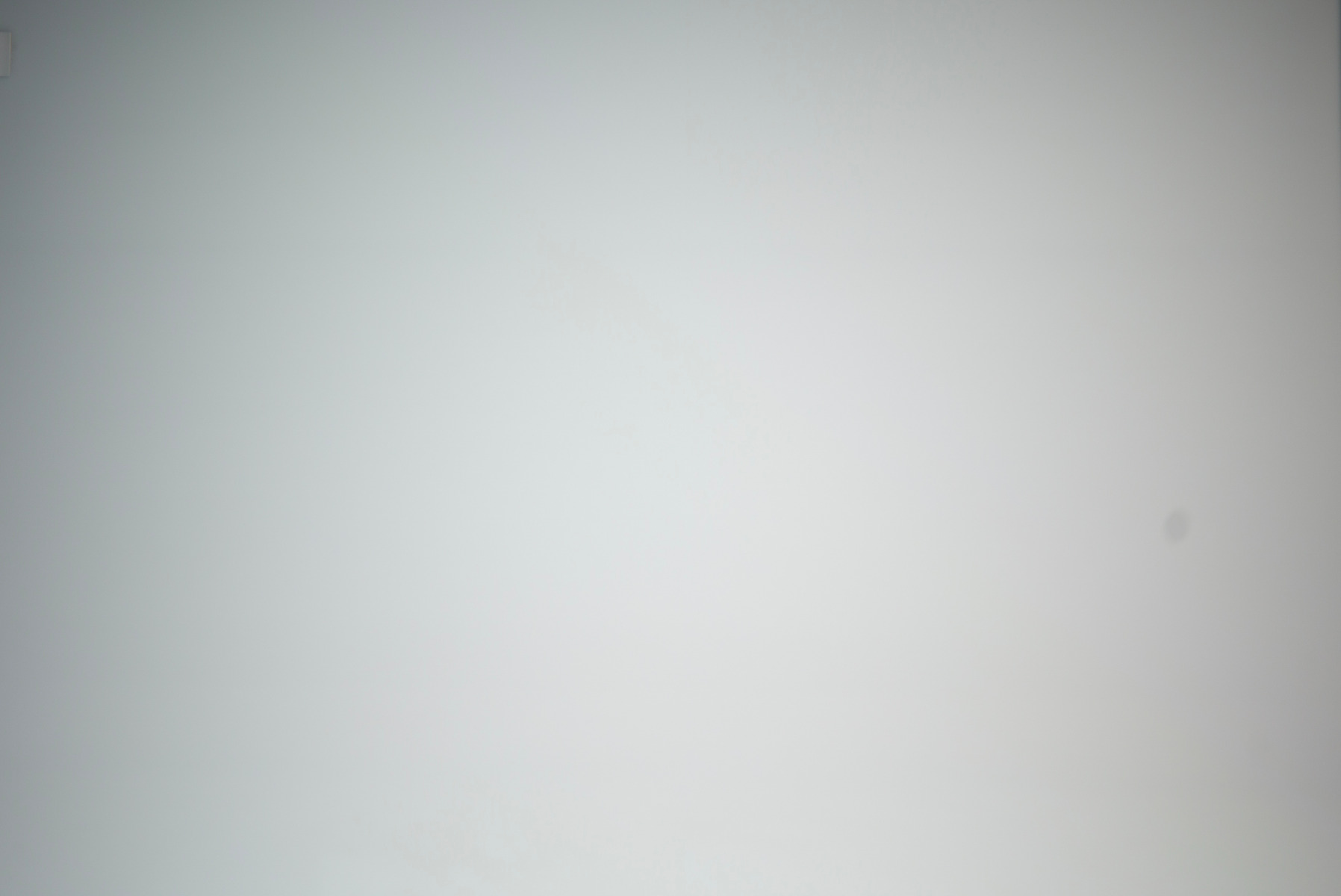
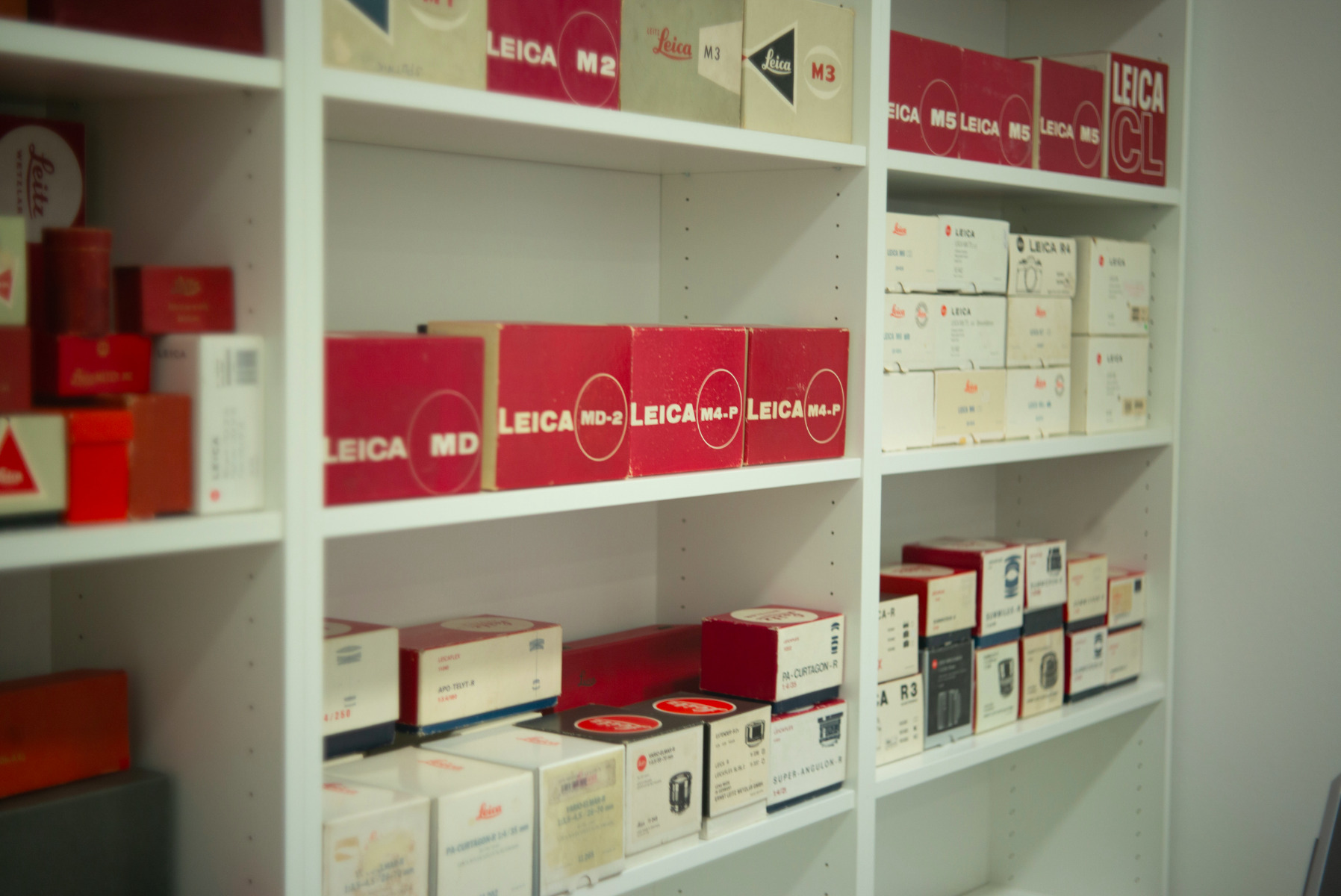
Sample Images with the Leica M39 Summitar 2/5cm
with a balsam separation problem inbetween the front lens elements at f/2.
As you can see, you can't see anything. The camera apparently has some dust on the sensor in the lower right corner and the Summicron and Summitar differ in their look of course. Otherwise, however, nothing of the defects can be seen.
That makes one thoughtful and one asks themselves how clean a lens really has to be. With strong backlighting it can of course happen that effects occur which have not been simulated now. For example, abnormal light refraction in the balsam separation. To get back to the peg of this article, the picture of the Noctilux may make you feel unsure at first, but in my opinion there is no reason to not just enjoy the photos you will take with it. Because, let's be honest, without modern and powerful light sources like LEDs, you wouldn't be able to see anything of the „flaws“ at the Noctilux and Summilux. What I take away from this comparison is that when it comes to the cleanness of lenses, you can lean back and relax. Not every small defect screams for a correction. Shoot the lens first and then maybe take care of its condition, not the other way around. This is also extremely reassuring when buying used or particularly old lenses. There is no reason to worry when buying them, because they often are not as „damaged“ as maybe advertised.
Of course, none of this is a free ticket for defect glasses, everything has its limits. But these limits are often wider than you might think.
-
Where to Repair Your Vintage Camera And What to Watch Out For
-
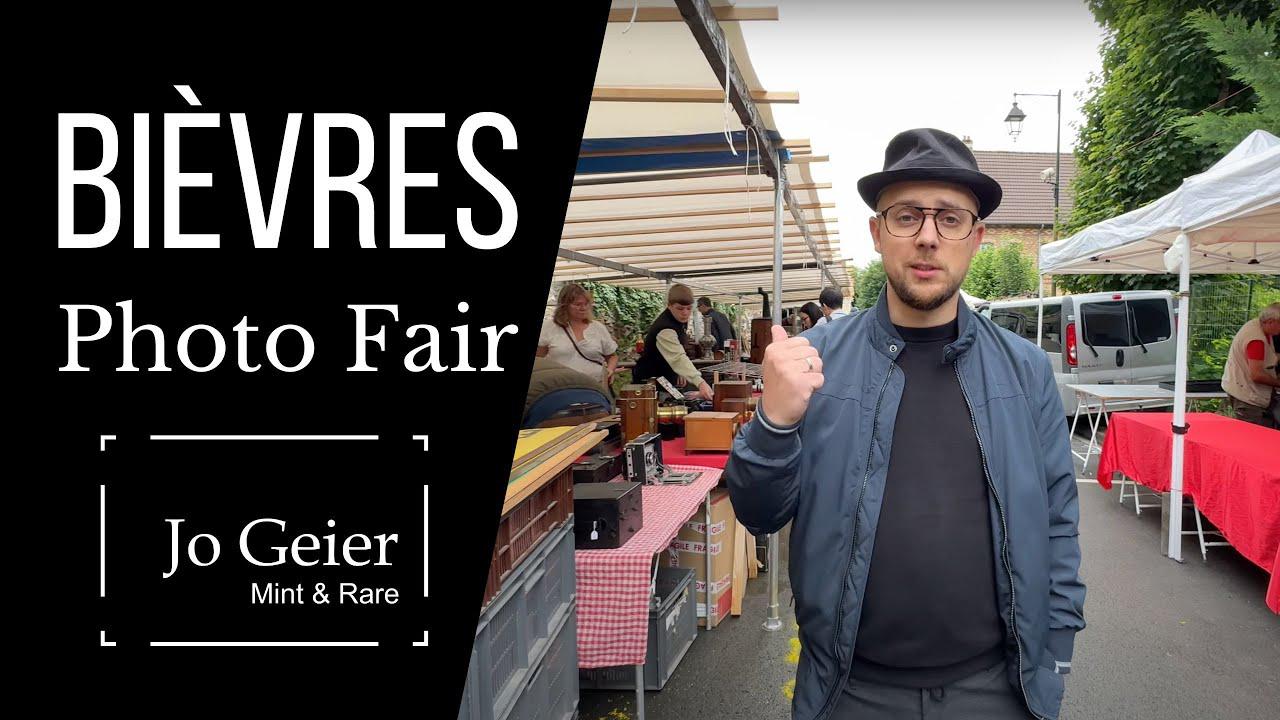 Meet Us at the 61st Bièvres International Photo Fair – June 7–8, 2025
Meet Us at the 61st Bièvres International Photo Fair – June 7–8, 2025
-
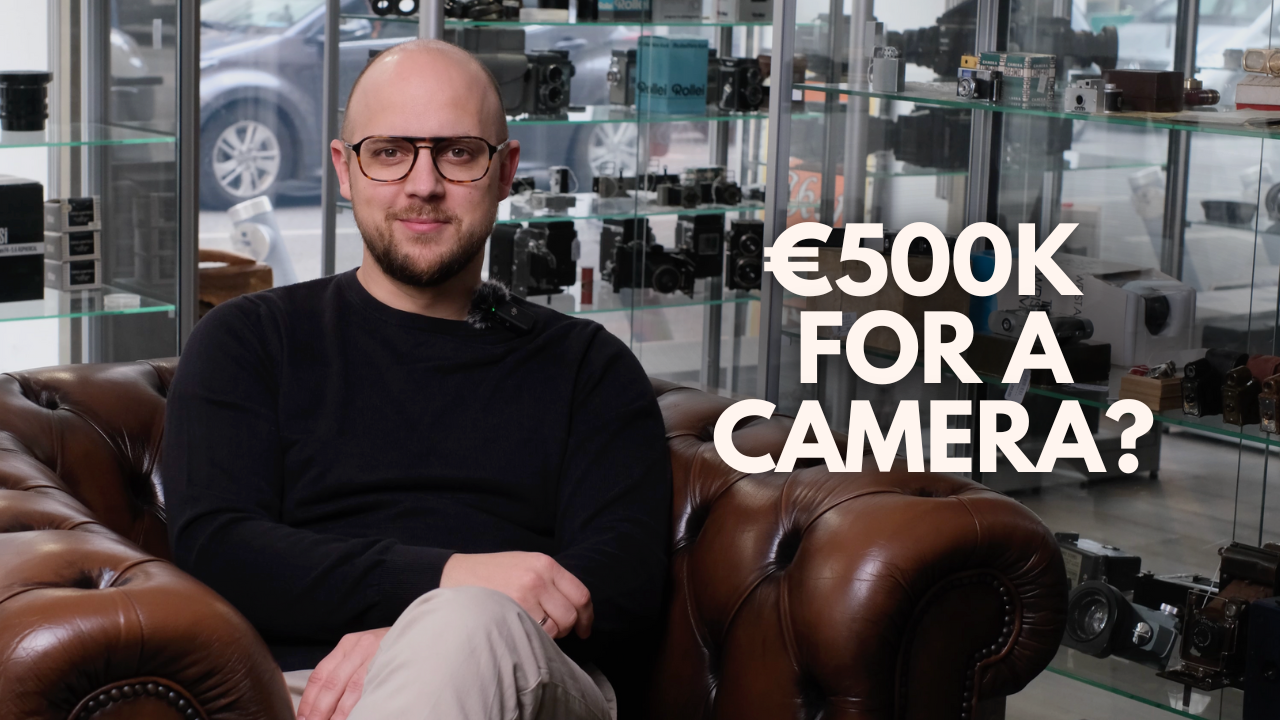 Shocking Bidding Results at Wetzlar Camera Auctions - Jo Geier - Mint & Rare
Shocking Bidding Results at Wetzlar Camera Auctions - Jo Geier - Mint & Rare
-
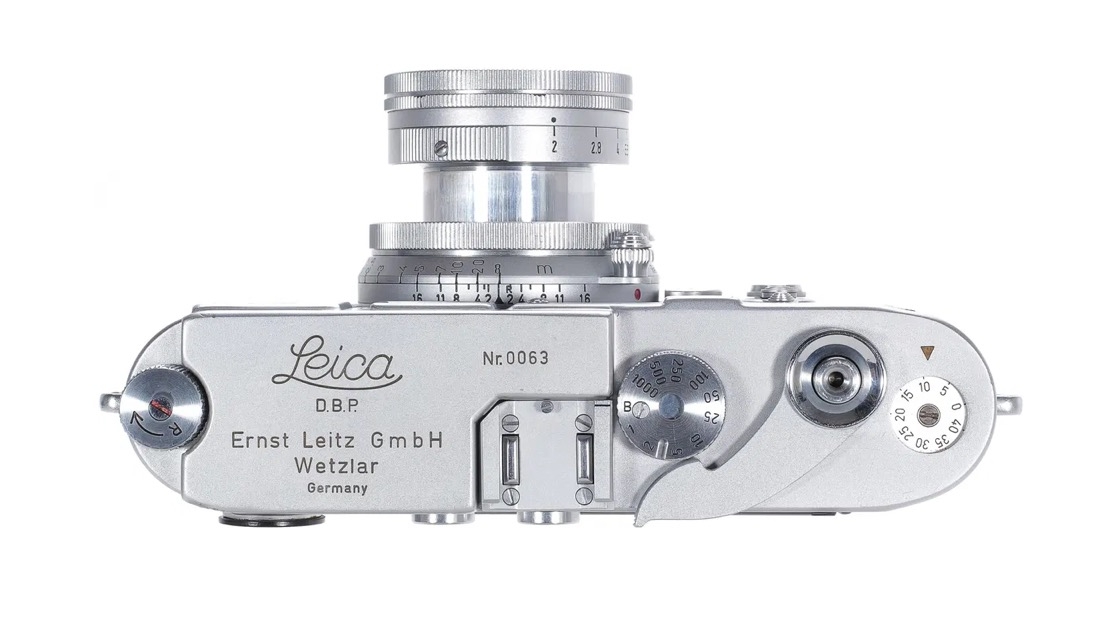 Leica Prototype Cameras & Lenses: Rare Collector’s Guide
Leica Prototype Cameras & Lenses: Rare Collector’s Guide
-
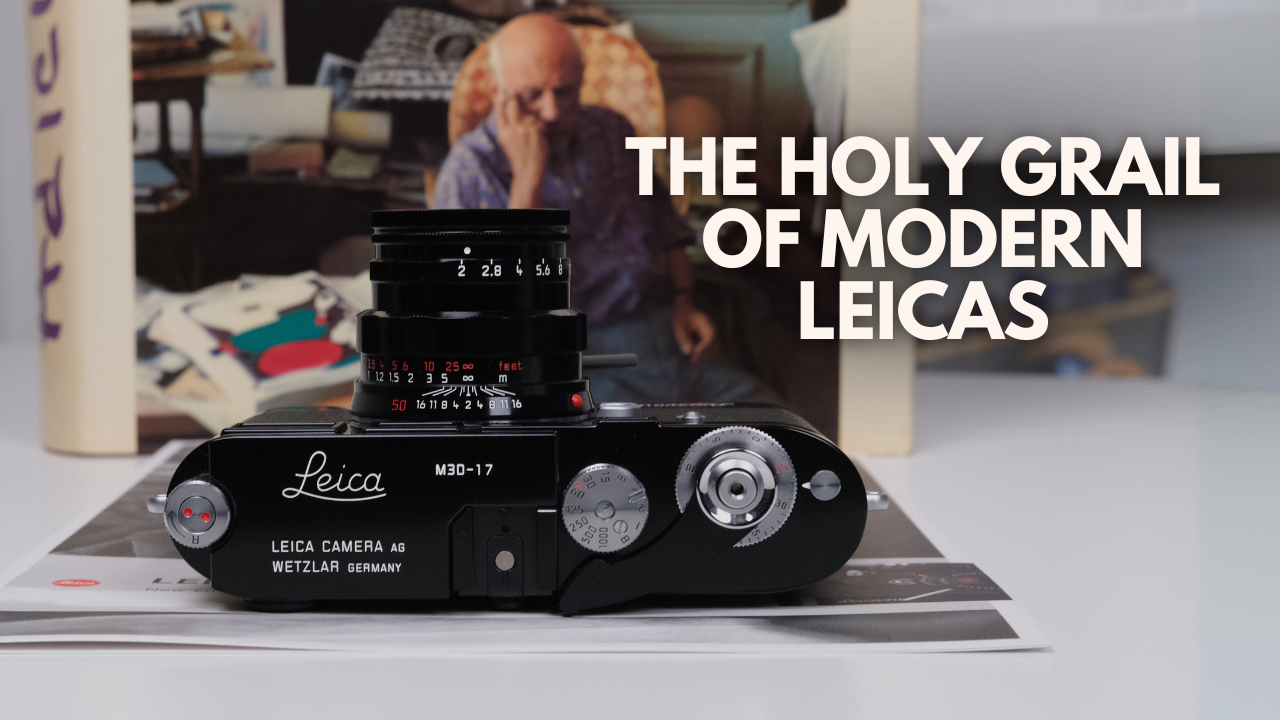 Only 16 Exist: Leica M3D-17 David Douglas Duncan - Jo Geier - Mint & Rare
Only 16 Exist: Leica M3D-17 David Douglas Duncan - Jo Geier - Mint & Rare
